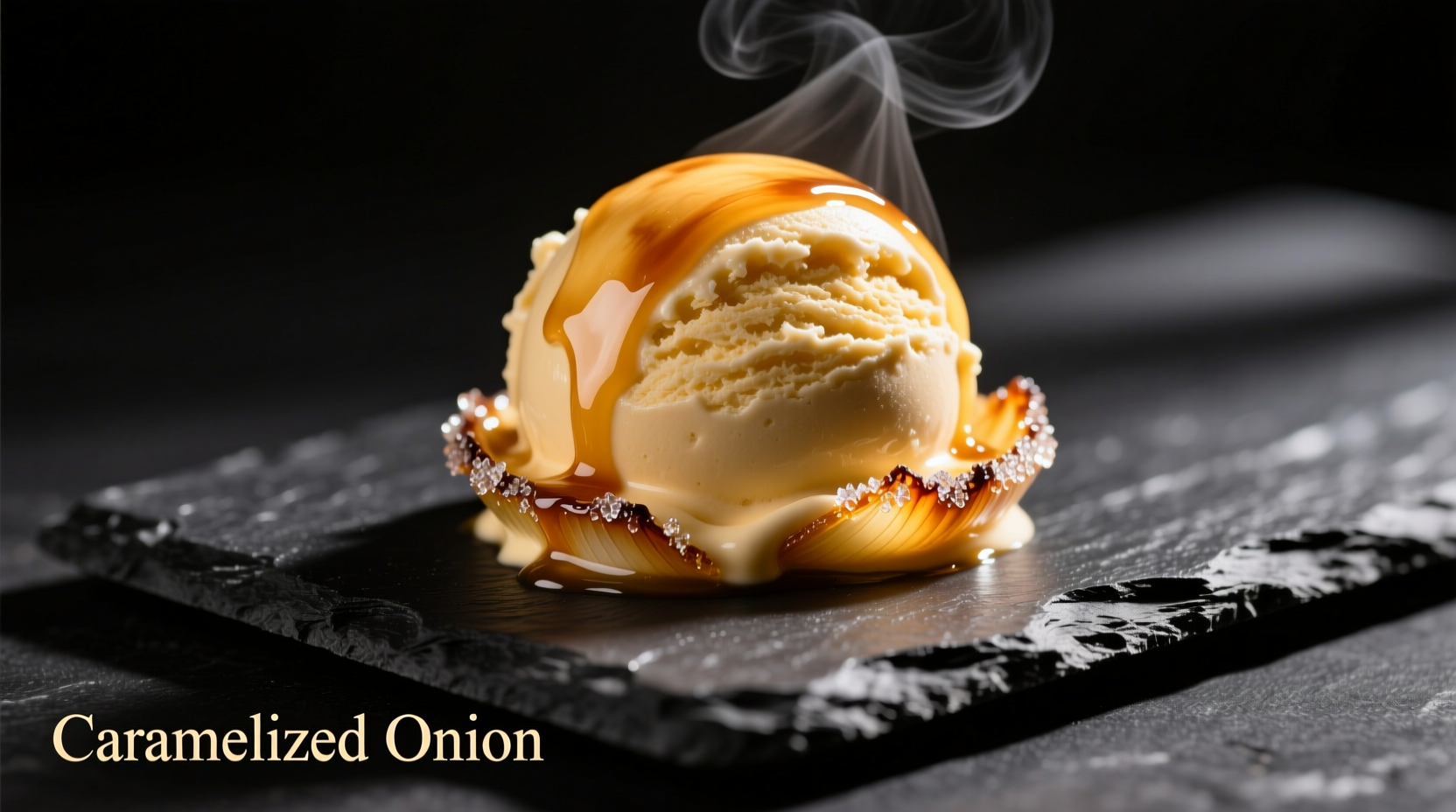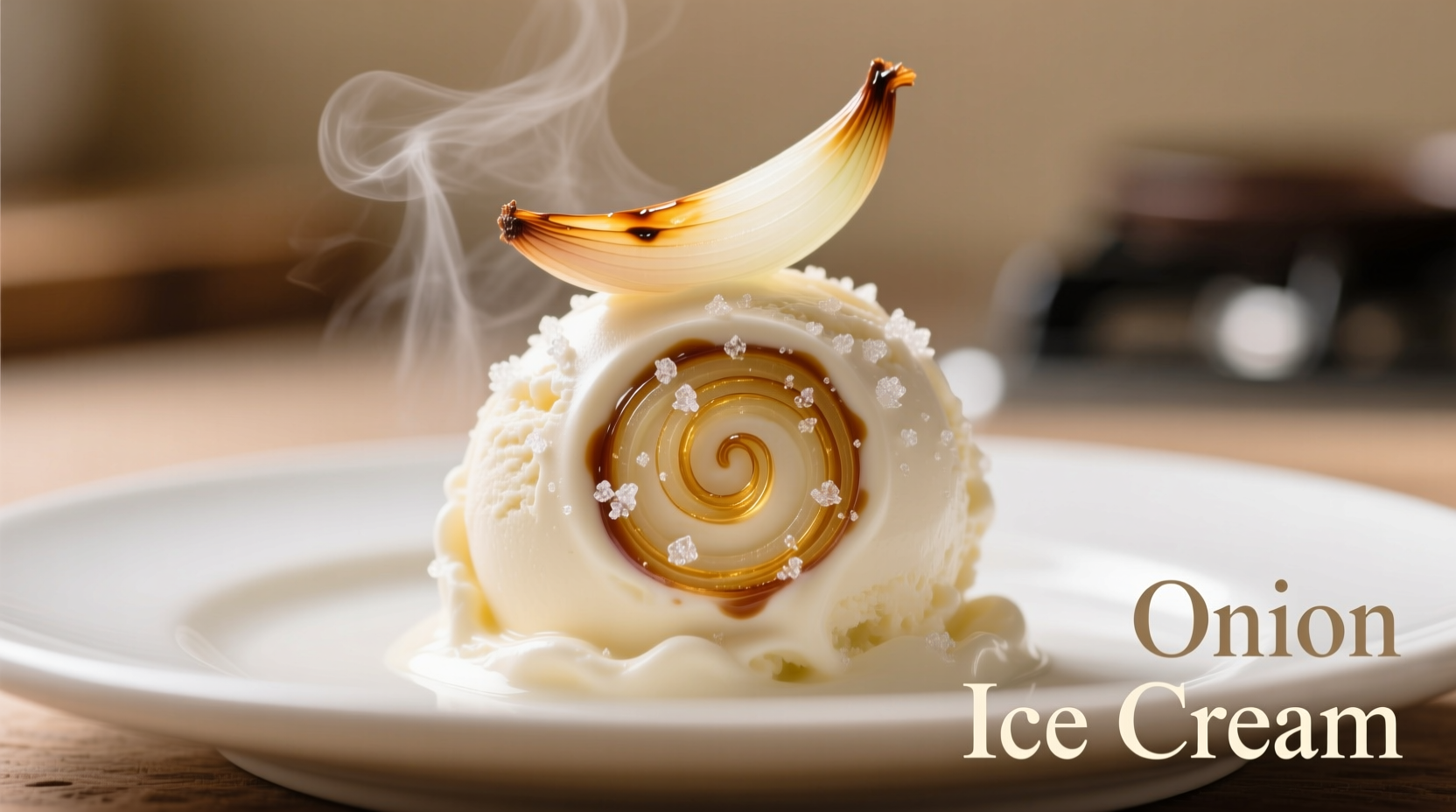Imagine finishing a rich steak dinner with a scoop of something cold and creamy—but instead of chocolate or vanilla, you're served a delicate scoop of golden-hued onion ice cream. While it sounds bizarre at first, this culinary creation represents the cutting edge of modern gastronomy where chefs deliberately blur the lines between sweet and savory courses.
The Science Behind Savory Frozen Treats
Contrary to popular belief, onion ice cream isn't a prank or internet hoax—it's a legitimate culinary technique employed by innovative chefs worldwide. The magic happens through the Maillard reaction during caramelization, which transforms sharp raw onion compounds into complex sweet-savory notes that integrate beautifully with dairy's fat content. According to food science research from the American Chemical Society, heating onions above 140°C breaks down sulfur compounds while developing over 70 new flavor molecules, creating a foundation suitable for frozen preparations.
| Onion Preparation Method | Flavor Profile | Suitable For Ice Cream? |
|---|---|---|
| Raw | Sharp, pungent, acrid | No - overwhelms dairy |
| Caramelized (45+ mins) | Sweet, umami, mellow | Yes - ideal base |
| Quick-sautéed | Mildly sweet, slightly sharp | Possible with balancing ingredients |
Why Temperature Transforms Flavor Perception
Cold temperatures significantly alter our taste perception—a phenomenon documented by National Institutes of Health research. When served frozen, onion ice cream's flavor compounds release more gradually, allowing the creamy texture to balance the savory elements. The fat content in ice cream (typically 10-14%) acts as a flavor carrier that smooths the transition between sweet and savory notes.

Three Culinary Applications You'll Actually Encounter
Professional kitchens use onion ice cream in specific, intentional ways—not as a standalone dessert but as a sophisticated component:
- Palate cleanser between courses - Served in small quenelles after rich meat dishes to reset taste buds with its cool temperature and clean finish
- Accompaniment to game meats - Pairs exceptionally with venison or duck where the sweetness complements gamey flavors
- Modernist take on classic pairings - Reimagines traditional onion soup gratinée as a frozen amuse-bouche with melted cheese foam
Where This Culinary Technique Originated
The practice of savory frozen desserts dates back to 19th century French cuisine, when chefs like Auguste Escoffier experimented with granités salés (salty sorbets) as palate cleansers. Modern onion ice cream specifically emerged from molecular gastronomy movements in the early 2000s, with chefs like Heston Blumenthal at The Fat Duck pioneering savory ice cream applications. According to culinary archives from the International Culinary Institute, savory ice creams gained traction as chefs sought to challenge conventional course structures.
How to Experience Authentic Onion Ice Cream
If you're curious to try this unusual preparation, focus your search on establishments known for culinary innovation:
- Michelin-starred restaurants with tasting menu formats
- Chef-driven establishments specializing in modernist cuisine
- Special events like Madrid Fusion or Copenhagen Food Festival
Avoid assuming it's widely available—most traditional ice cream shops won't carry it. When ordering, ask specifically about caramelized onion preparations as this distinguishes authentic versions from potential novelty items using raw onion.
Creating Balanced Onion Ice Cream at Home
For adventurous home cooks, success requires precise technique:
- Slow caramelization - Cook onions over low heat for 45-60 minutes until deep golden brown
- Flavor balancing - Add 1-2 tsp balsamic vinegar per pound of onions to enhance sweetness
- Texture refinement - Strain caramelized onions through fine mesh before incorporating into custard base
- Temperature control - Chill mixture below 4°C before churning to prevent ice crystal formation
The ideal ratio is 1 cup caramelized onions per quart of ice cream base. Professional chef Sophie Dubois notes: "The key is treating onions like fruit—coaxing out their natural sugars through patience, not masking their flavor with excessive cream or sugar."
Common Misconceptions Debunked
Many assume onion ice cream tastes like raw onion or represents a culinary gimmick. In reality, properly prepared versions showcase how temperature and technique transform ingredients. Food historians at the Oxford Symposium on Food and Cookery confirm that savory frozen desserts have appeared in European cookbooks since the 1800s, demonstrating this isn't merely a modern fad but an evolution of established culinary principles.
When Onion Ice Cream Works (and When It Doesn't)
This preparation shines in specific contexts but fails when misapplied:
- Works well - As part of multi-course tasting menus, with rich meat dishes, in small portions as palate cleanser
- Doesn't work - As standalone dessert, with delicate fish dishes, in large portions, using raw or undercooked onions
Culinary professionals emphasize that onion ice cream serves a specific purpose in modern cuisine—it's not intended to replace traditional sweet ice creams but to expand the flavor palette available to chefs creating sophisticated dining experiences.











 浙公网安备
33010002000092号
浙公网安备
33010002000092号 浙B2-20120091-4
浙B2-20120091-4